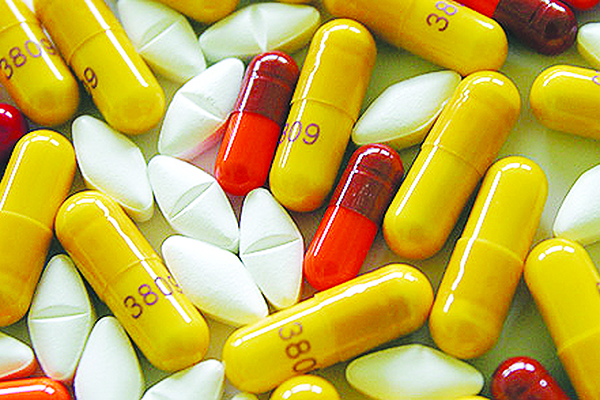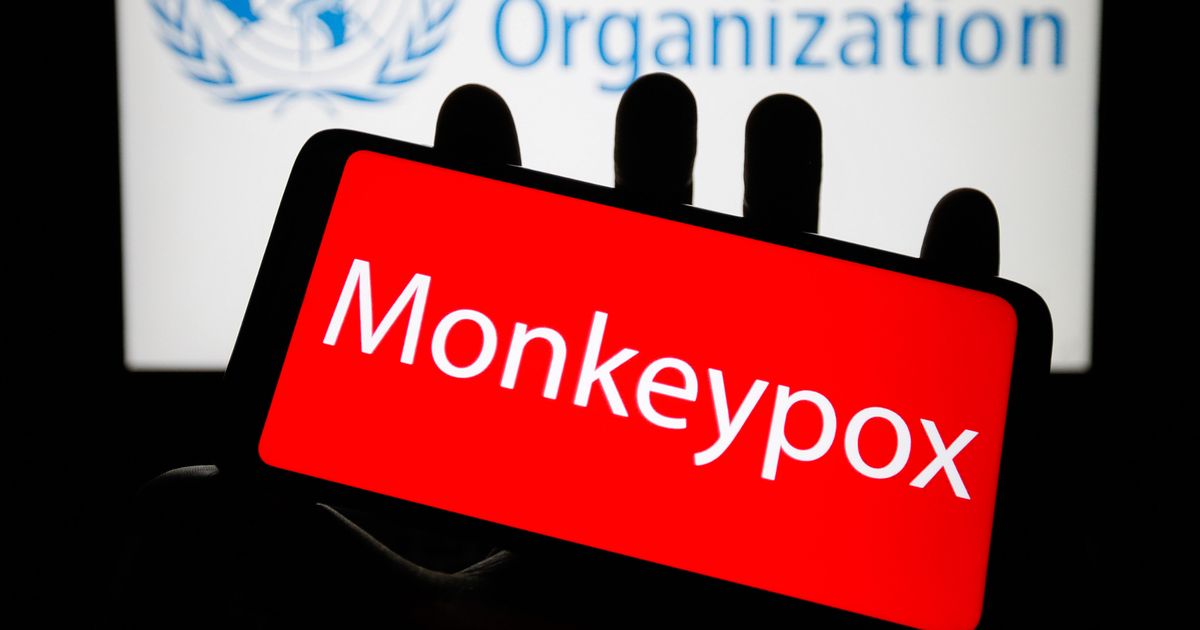Health
18.2m People On Antiretroviral Therapy—UNAIDS


By Modupe Gbadeyanka
A new report by the UNAIDS has shown that countries are getting on the Fast-Track, with an additional one million people accessing treatment in just six months (January to June 2016).
The reports revealed that by June 2016, around 18.2 million [16.1 million–19.0 million] people had access to the life-saving medicines, including 910 000 children, double the number five years earlier. If these efforts are sustained and increased, the world will be on track to achieve the target of 30 million people on treatment by 2020.
Yesterday, the Get on the Fast-Track: the life-cycle approach to HIV, was launched in Windhoek, Namibia, by the President of Namibia, Hage Geingob and the Executive Director of UNAIDS, Michel Sidibé.
“Just under two years ago, 15 million people were accessing antiretroviral treatment—today more than 18 million are on treatment and new HIV infections among children continue to fall,” said President Geingob. “Now, we must ensure that the world stays on the Fast-Track to end the AIDS epidemic by 2030 in Namibia, in Africa and across the world.”
The report contains detailed data on the complexities of HIV and reveals that girls’ transition to womanhood is a very dangerous time, particularly in sub-Saharan Africa. “Young women are facing a triple threat,” said Mr Sidibé. “They are at high risk of HIV infection, have low rates of HIV testing, and have poor adherence to treatment. The world is failing young women and we urgently need to do more.”
HIV prevention is key to ending the AIDS epidemic among young women and the cycle of HIV infection needs to be broken. Recent data from South Africa shows that young women are acquiring HIV from adult men, while men acquire HIV much later in life after they transition into adulthood and continue the cycle of new infections.
The report also shows that the life-extending impact of treatment is working. In 2015, there were more people over the age of 50 living with HIV than ever before—5.8 million. The report highlights that if treatment targets are reached, that number is expected to soar to 8.5 million by 2020. Older people living with HIV, however, have up to five times the risk of chronic disease and a comprehensive strategy is needed to respond to increasing long-term health-care costs.
The report also warns of the risk of drug resistance and the need to reduce the costs of second- and third-line treatments. It also highlights the need for more synergies with tuberculosis (TB), human papillomavirus (HPV) and cervical cancer, and hepatitis C programmes in order to reduce the major causes of illness and death among people living with HIV. In 2015, 440 000 of the 1.1 million people who died from an AIDS-related illness died from TB, including 40 000 children.
“The progress we have made is remarkable, particularly around treatment, but it is also incredibly fragile,” said Mr Sidibé. “New threats are emerging and if we do not act now we risk resurgence and resistance. We have seen this with TB. We must not make the same mistakes again.”
Get on the Fast-Track: the life-cycle approach to HIV outlines that large numbers of people at higher-risk of HIV infection and people living in high-burden areas are being left without access to HIV services at critical points in their lives, opening the door to new HIV infections and increasing the risk of dying from AIDS-related illnesses. The report examines the gaps and approaches needed in HIV programming across the life cycle and offers tailored HIV prevention and treatment solutions for every stage of life.
“Ending AIDS is possible only if we join hands—by each doing what is within our scope, creatively and aggressively embracing the 90–90–90 targets,” said Eunice Makena Henguva, Youth Economic Empowerment Project Officer for the Namibian Women’s Health Network.
From birth
Globally, access to HIV medicines to prevent mother-to-child transmission of HIV has increased to 77% in 2015 (up from 50% in 2010). As a result, new HIV infections among children have declined by 51% since 2010.
The report highlights that of the 150 000 children who were newly infected with HIV in 2015, around half were infected through breastfeeding. It stresses that infection through breastfeeding can be avoided if mothers living with HIV are supported to continue taking antiretroviral medicines, allowing them to breastfeed safely and ensure that their children receive the important protective benefits of breastmilk.
Testing also remains a major issue. The report shows that only four of 21 priority countries in Africa provided HIV testing for more than half the babies exposed to HIV within their first weeks of life. It also shows that in Nigeria, which accounts for more than a quarter of all new HIV infections among children globally, only half of pregnant women living with HIV are tested for HIV.
Get on the Fast-Track: the life-cycle approach to HIV stresses that more efforts are needed to expand HIV testing for pregnant women, expand treatment for children and improve and expand early infant diagnosis by using new diagnostic tools and innovative methods, such as SMS reminders, to retain mothers living with HIV and their babies in care.
The report also encourages countries to adopt the targets of the Start Free, Stay Free, AIDS Free framework led by UNAIDS and the United States President’s Emergency Plan for AIDS Relief to reduce the number of new HIV infections among children, adolescents and young women, and ensure lifelong access to antiretroviral therapy if they are living with HIV.
Through adolescence
The report shows that the ages between 15 and 24 years are an incredibly dangerous time for young women. In 2015, around 7500 young women became newly infected with HIV every week. Data from studies in six locations within eastern and southern Africa reveal that in southern Africa girls aged between 15 and 19 years accounted for 90% of all new HIV infections among 10–19-year-olds, and more than 74% in eastern Africa.
Globally, between 2010 and 2015, the number of new HIV infections among young women aged between 15 and 24 years was reduced by just 6%, from 420 000 to 390 000. To reach the target of less than 100 000 new HIV infections among adolescent girls and young women by 2020 will require a 74% reduction in the four years between 2016 and 2020.
Many children who were born with HIV and survived are now entering adulthood. Studies from 25 countries in 2015 show that 40% of young people aged between 15 and 19 years became infected through mother-to-child transmission of HIV. This transition is also magnifying another major challenge—high numbers of AIDS-related deaths among adolescents. Adolescents living with HIV have the highest rates of poor medication adherence and treatment failure.
A range of solutions are needed to respond to the specific needs of adolescents, including increased HIV prevention efforts, keeping girls and boys in school, increasing HIV testing and voluntary medical male circumcision, pre-exposure prophylaxis and immediate access to antiretroviral therapy.
Key populations
In 2014, an estimated 45% of all new HIV infections globally were among members of key populations and their sexual partners. The report warns that new HIV infections are continuing to rise among people who inject drugs (by 36% from 2010 to 2015) and among gay men and other men who have sex with men (by 12% from 2010 to 2015) and are not declining among sex workers or transgender people.
The report outlines the critical need to reach key populations with HIV prevention and treatment programmes that meet their specific needs throughout their lives; however, total funding levels are far below what is needed for HIV programmes to reach key populations, particularly funding from domestic sources.
Adulthood
In July 2016, in the HIV prevention gap report, UNAIDS warned that HIV prevention efforts are not working for adults and that new HIV infections among adults have failed to decline for at least five years. Get on the Fast-Track: the life-cycle approach to HIV cites concerns that western and central Africa is off-track in responding to HIV. The region accounts for 18% of people living with HIV, but a serious lack of access to treatment means that the region accounts for 30% of all AIDS-related deaths globally.
The report sheds new light on HIV infection and treatment among adult men, showing that men are much less likely to know their HIV status and access treatment than women. One study in KwaZulu-Natal, South Africa, showed that just 26% of men were aware of their HIV status, only 5% were on treatment and that the viral load among men living with HIV was extremely high, making onward transmission of the virus much more likely.
Into later life
The report shows that antiretroviral therapy is allowing people living with HIV to live longer. In 2015, people more than 50 years old accounted for around 17% of the adult population (15 years and older) living with HIV. In high-income countries, 31% of people living with HIV were over the age of 50 years.
Get on the Fast-Track: the life-cycle approach also shows that around 100 000 people in low- and middle-income countries aged 50 years and over are estimated to newly acquire HIV every year, confirming the need to include older people in HIV prevention, as well as treatment, programming.
As people living with HIV grow older, they are also at risk of developing long-term side-effects from HIV treatment, developing drug resistance and requiring treatment of co-morbidities, such as TB and hepatitis C, which can also interact with antiretroviral therapy. Continued research and investment is needed to discover simpler, more tolerable treatments for HIV and co-morbidities and to discover an HIV vaccine and cure.
Finding solutions for everyone at every stage of life
The report concludes that investments must be made wisely across the life cycle, using a location–population approach to ensure that evidence-informed, high-impact programmes are available in the geographical areas and among the populations in greatest need.
It strongly urges countries to continue to Fast-Track HIV prevention, testing and treatment in order to end the AIDS epidemic as a public health threat by 2030 and ensure that future generations are free from HIV.
Health
SpecSMART Eye Clinic Takes Affordable, Quality Care to Ikeja, Environs

By Modupe Gbadeyanka
The dream of residents of Ikeja and its environs enjoying affordable and quality care has now become a reality as a result of the opening of a new branch of SpecSMART Eye Clinic in the Opebi area of the capital of Lagos State.
SpecSMART Eye Clinic, a leading provider of optometry services in Lagos, commenced operations in Nigeria’s commercial capital in 2022.
Since then, it has been offering top-notch eye care to residents of the metropolis, especially those living on the Island. It has built a strong reputation for delivering high-quality primary eye care and optical products.
However, to extend its services to Lagosians living on the Mainland, it has now opened a new branch in Ikeja, reinforcing its commitment to providing accessible, affordable eye care to a wider community.
Business Post gathered that the clinic’s state-of-the-art services are supported by a team of skilled optometrists and opticians, utilizing cutting-edge digital equipment.
The new Ikeja location will offer a wide range of services, including Automated Eye Examinations using advanced digital equipment for precise diagnosis and personalized care.
In addition, clients will enjoy on-the-spot lens glazing for single vision, bifocals, and varifocals, with additional lens coatings, with services to be rendered seven days a week from 9 am to 9 pm on Mondays to Saturdays, and on Sundays and public holidays from 10 am 7 pm.
Also, the clinic has over 950 frames, ranging from affordable home brands to premium designer options, priced from N18,000, and has flexible appointment scheduling with 24-hour online booking via SpecSMART’s website.
The facility has partnerships with leading HMO providers in the country and offers glaucoma management and other essential eye health services.
According to the company, its introductory packages start from N30,000 and include consultation, frame, and single-vision lenses.
“With the opening of our Ikeja branch, we are ready to serve more individuals who need accessible, cost-effective, and reliable eye care.
“Our aim is to create a positive impact in Nigeria’s optometry sector by combining advanced technology with a patient-centred approach,” the Practice Head and Medical Director of SpecSMART, Dr Adaeze Nwoko, stated.

Health
FG Begins Vaccination Against Mpox in FCT, Six States

By Adedapo Adesanya
The Federal Ministry of Health and Social Welfare through the National Primary Health Care Development Agency (NPHCDA) has commenced the vaccination against Monkeypox, now known as Mpox.
Business Post reports that Bayelsa, Rivers, Cross River, Akwa Ibom, Enugu, Benue, and the Federal Capital Territory, were selected as pilot states for the vaccination.
An average of 631 persons are expected to be vaccinated across the seven states with two doses of the Mpox vaccine. A buffer for 50 persons will be kept at the national in case of an upsurge in other states.
NPHCDA in a statement posted on its verified X account confirmed the exercise, stressing that the vaccination will help to protect communities and safeguarding health of the people.
In a related development, according to the latest update by the Nigeria Centre for Disease Control (NCDC), there are 1,442 suspected cases of Mpox from 36 states and the Federal Capital Territory, while the number of confirmed cases of the infection was 118 from 28 states and the FCT.
“To prevent the spread of Mpox, we strongly advise the public to avoid contact with animals that may carry the virus, including sick or dead animals in affected areas, avoid handling materials that have been in contact with infected animals, limit unnecessary physical contact with individuals who are infected, practice frequent handwashing with soap and water, and ensure that animal food products are thoroughly cooked before eating.
“It’s also important to use protective clothing and gloves when handling sick animals or their tissues. Similarly, health workers are advised to follow standard safety protocols including droplet precautions when treating patients, use protective equipment including masks, gloves, and gowns, during patient care, and be vigilant for symptoms of Mpox, especially fever and rash, among other measures.”
Health
AXA Mansard Health Partners LUTH in Blood Donation Drive

By Aduragbemi Omiyale
Over 250 pints of blood have been donated by AXA Mansard Health to the Lagos University Teaching Hospital (LUTH), Idi Araba.
The blood was donated by more than 100 employees of the leading health insurance company in Nigeria through its volunteering programme tagged AXA Hearts in Action.
The initiative is part of the company’s blood donation drive aimed at contributing to positive societal and environmental impacts through employee volunteering, and expertise related financial support and in-kind donations.
According to the Chief Client Officer of AXA Mansard, Ms Rashidat Adebisi, “Through the AHIA, our employees do not just give time to great causes; we work together for a better future.”
“We share our time, knowledge and expertise as a people with a shared purpose of acting for human progress by protecting what matters through initiatives like this,” she added.
Ms Adebisi said the blood drive is a shining example of the philosophy in action, where collective contributions serve as a reminder that true impact often involves giving more than just money. It’s about putting one’s heart in action – an idea embedded in AXA’s corporate culture.
On his part, the chief executive of AXA Mansard Health Limited, Mr Tope Adeniyi, said with hospitals frequently experiencing blood shortages, events like these serve as a lifeline for patients in need.
“We are proud to contribute to the local healthcare sector and provide much-needed support to hospitals such as LUTH, ensuring that they have resources essential to saving lives,” he added.
Also commenting, the Head of Corporate Services and Public Relations at LUTH, Omolola Olubukunola Fakeye, thanked the firm for the “generous support,” which has made a “meaningful difference to our blood bank and ultimately to the lives of patients.”
“Blood donations are invaluable in many critical treatments, and initiatives like AXA Mansard’s blood drive bring immense relief to healthcare system.
“We are sincerely grateful for this partnership and the dedication of AXA Mansard’s employees,” Fakeye stated.
AXA Hearts in Action operates globally, she urging AXA employees everywhere to engage with and give back to their communities.
Through diverse projects – from health initiatives like this blood drive and medical outreaches to environmental efforts like the AXA Week for Good “Trash-to-Treasure” waste management project – AXA staff have opportunities to make a lasting difference on issues that matter.
For AXA Mansard, every act of social service brings them closer to the communities they serve, helping build a world where giving back is not only about charity but about lasting, positive change.
-

 Feature/OPED5 years ago
Feature/OPED5 years agoDavos was Different this year
-
Travel/Tourism8 years ago
Lagos Seals Western Lodge Hotel In Ikorodu
-

 Showbiz2 years ago
Showbiz2 years agoEstranged Lover Releases Videos of Empress Njamah Bathing
-

 Banking6 years ago
Banking6 years agoSort Codes of GTBank Branches in Nigeria
-

 Economy2 years ago
Economy2 years agoSubsidy Removal: CNG at N130 Per Litre Cheaper Than Petrol—IPMAN
-

 Banking2 years ago
Banking2 years agoFirst Bank Announces Planned Downtime
-

 Sports2 years ago
Sports2 years agoHighest Paid Nigerian Footballer – How Much Do Nigerian Footballers Earn
-

 Technology4 years ago
Technology4 years agoHow To Link Your MTN, Airtel, Glo, 9mobile Lines to NIN

















